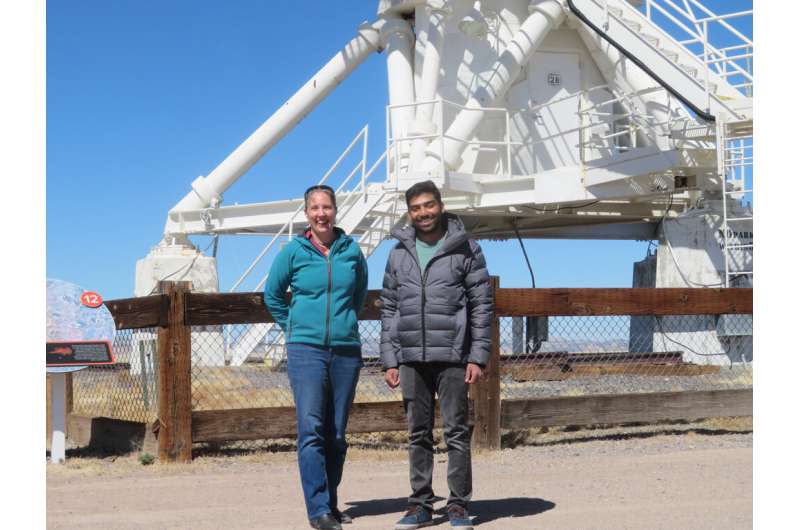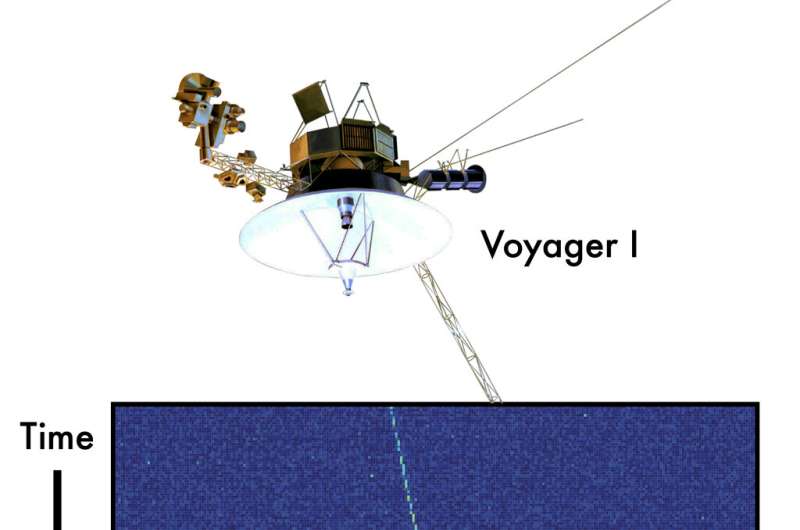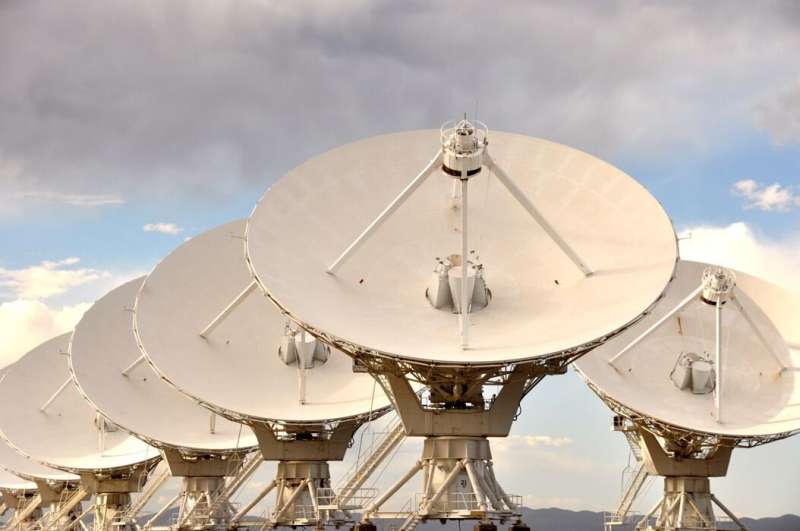But while these observations are being undertaken, a tap on the signal distribution network will shunt a copy of the data into a special receiver sporting very narrow (approximately one hertz wide) channels. Researchers expect that any signals from a deliberately constructed transmitter will contain such narrow-band components, and their discovery would indicate that the signal is not produced by nature, but by an alien transmitter.
The new processing system for SETI is dubbed "COSMIC"—the Commensal Open-Source Multimode Interferometer Cluster—and is spearheaded by the SETI Institute, in collaboration with the National Radio Astronomy Observatory and the Breakthrough Listen Initiative.

"COSMIC operates commensally, which means it works in the background using a copy of the data astronomers are taking for other scientific purposes," said Paul Demorest, Scientist and Group Lead for VLA/VLBA Science Support at the National Radio Astronomy Observatory. "This is an ideal and very efficient way to get large amounts of telescope time to search for rare signals."
Unlike many previous SETI observations, a wide variety of transmissions, such as pulsed and transient signals, can be recognized by this new experiment. The range of frequencies to be monitored is unprecedented, and the tally of star systems examined will be approximately ten million.
Since the beginning of 2023, signals from the Voyager 1 spacecraft have been detected by the COSMIC system to verify the operation of the individual antennas in the array as well as combining their observations to produce a result that clearly shows the carrier and sidebands of the transmissions from the spacecraft. Voyager 1 is currently at a distance of about 15 billion miles and is the most distant human-made object.

"The detection of Voyager 1 is an exciting demonstration of the capabilities of the COSMIC system," said Jack Hickish, founder, Real-Time Radio Systems Ltd. "It is the culmination of an enormous amount of work from an international team of scientists and engineers. The COSMIC system is a fantastic example of using modern general-purpose compute hardware to augment the capabilities of an existing telescope and serves as a testbed for technosignatures research on upcoming radio telescopes such as NRAO's Next Generation VLA."
When combined with the exquisite sensitivity of the VLA, COSMIC will be approximately a thousand times more comprehensive than any previous SETI search. History shows that major improvements in the sensitivity and range of exploratory experiments are often rewarded with the detection of a signal. If so, this effort might see the uncovering of a radio whisper that would tell us that we're not the only intelligent inhabitants of the Milky Way Galaxy.
"The National Radio Astronomy Observatory is proud to partner with the SETI Institute in this exciting initiative," said Tony Beasley, Director of the NRAO. "Partnerships bringing together world-class research instruments, private research institutes, and members of the public personally committed to forefront science, can enable new important discoveries."
Provided by SETI Institute



